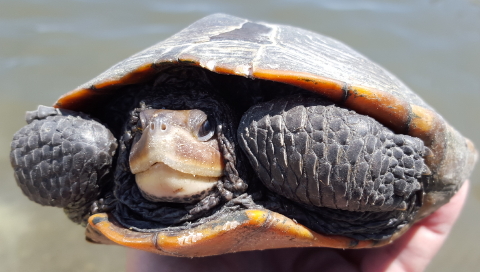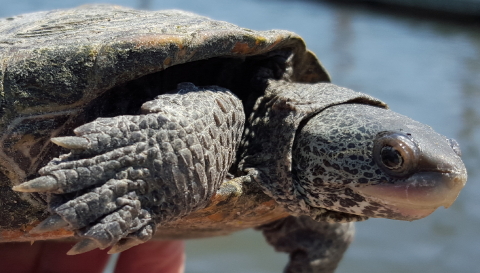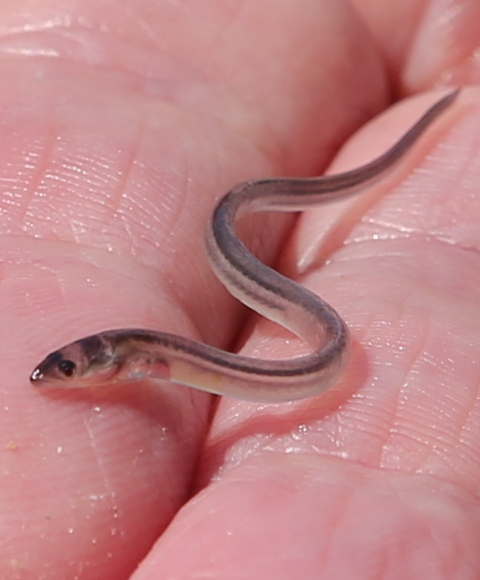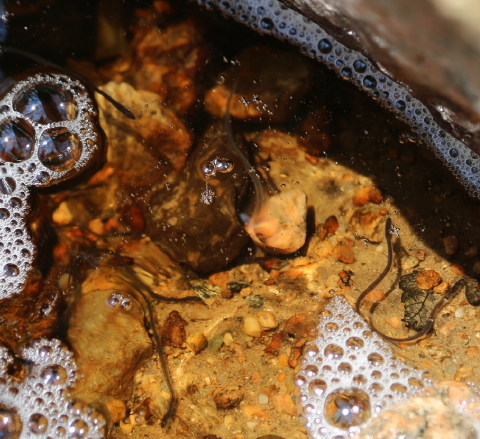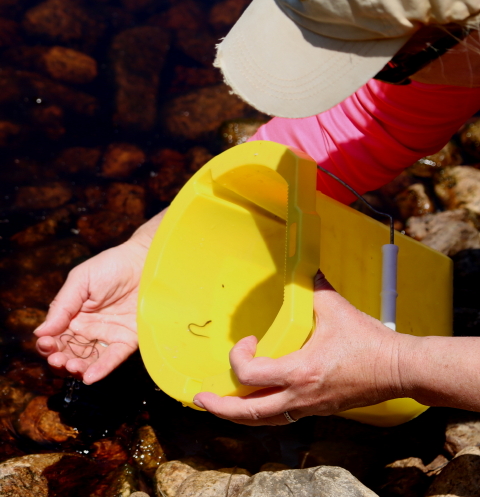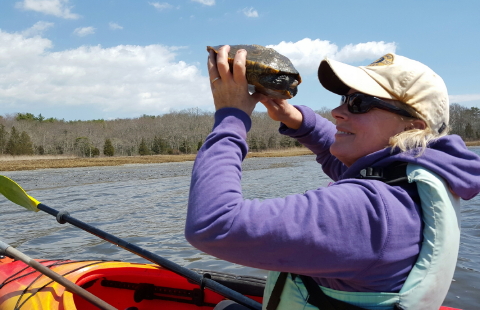Sue Wieber Nourse Examines Female Terrapin #265Â
This morning, 29 May, the Turtle Journal team captured a gravid female diamondback terrapin with fully developed eggs in the main Sippican Harbor mating aggregation. Â Her condition portends an imminent beginning to the diamondback terrapin nesting season on the SouthCoast of Massachusetts.
Sue Wieber Nourse Nets Female Terapin in Sippican Harbor
At low tide this morning we launched kayaks into the principal mating aggregations in Sippican Harbor, an estuary of Buzzards Bay. Â The first turtle Sue Wieber Nourse netted proved a unique lass: Â Terrapin #265.
Female Diamondback Terrapin #265 (a.k.a. Snakehead)
We have been following this lady for ten years, since her first capture on May 30th, 2005 when she was only ~ nine years old. Â She’s a special terrapin because of her unmarked, bluish skin which gives the appearance of a snakehead; very un-terrapin like, but easy to distinguish from all others.
Gravid Female Diamondback Terrapin #265
The most important finding this morning was that Terrapin #265 was palpably gravid with fully developed eggs which had dropped about midway down the canal. Â We estimate she’s still a few days shy of nesting, especially since #265 remains in the mating aggregation about 2.5 miles north of her nesting site.
When we first saw #265 in 2005, she weighed 1133 grams and measured 18.7 centimeters straight-line carapace length. Â Today, a decade later, she weighs 1435 grams and measures 20.1 centimeters carapace length. Â Last May 2014, she had a clouded left eye which seemed completely clear this morning.
Sue Wieber Nourse Releases Terrapin #265
Because of her “condition,” we released her immediately after examination, so that she could “get on with it.” Â We hope to see her soon at her nesting site.
Female Diamondback Terrapin #115
In addition to Terrapin #265, Sue netted other terrapins whom we had not seen in adulthood. Â Both of these turtles would have been the results of the intensive Buzzards Bay conservation effort for terrapin nests, eggs and hatchlings begun by the Turtle Journal team in 2003.
Female Terrapin #115 proved ~ 9 years old from the 2005 hatchling cohort. Â She has now reached maturity and should be nesting in the next few weeks. Â She did not show palpable signs of gravidity this morning.
Male Diamondback Terrapin #116
Male Terrapin #116 came from the 2006 hatchling cohort and, as is the case with male terrapins, has been mature for several years.





